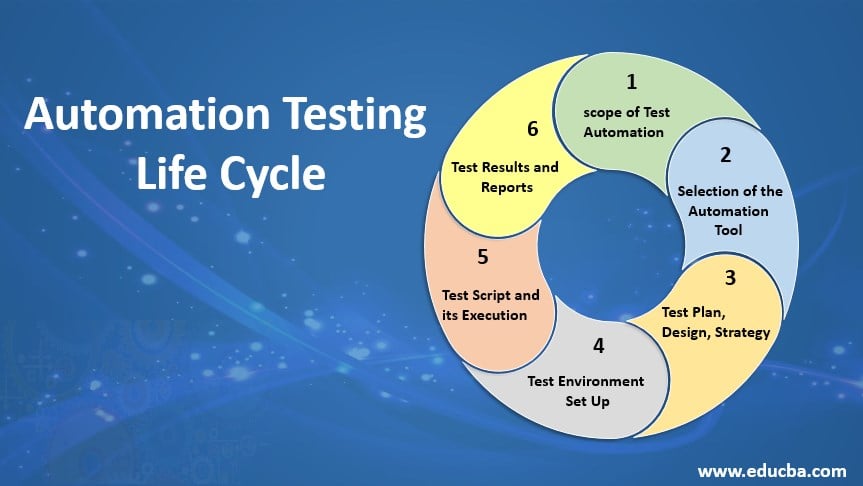From Handbook to Automated Testing: A Comprehensive Overview to Transitioning Efficiently and Properly
In the world of software program screening, the shift from manual to automated processes has actually become a significantly essential change for organizations seeking to boost performance and precision in their screening methods. As innovation remains to breakthrough, the requirement for smooth and efficient automated screening techniques has never ever been more pressing. The trip from guidebook to automated testing is not without its obstacles, but when come close to strategically and with a clear plan in mind, the advantages can be significant - automation testing. In this comprehensive overview, we will certainly check out vital actions and factors to consider vital for an effective transition, from the preliminary selection of devices to the assimilation of automation into existing process. Remain tuned to reveal the understandings that will certainly assist lead the way for a smoother and much more effective screening process.
Benefits of Automated Examining
Automated screening uses various benefits, boosting performance and precision in software program growth procedures. One key benefit is the significant reduction in screening time. Automated tests can be run all at once on multiple tools and operating systems, substantially speeding up the screening stage contrasted to hands-on screening. This enhanced performance enables for faster comments on the high quality of the software program, allowing programmers to identify and deal with problems without delay.
Additionally, automated screening ensures a higher level of precision in finding issues. Since automated tests adhere to predefined scripts, human error is reduced, causing more dependable test outcomes. Consistency in screening is also improved, as automated examinations execute the very same actions exactly each time they are run. This consistency is important in guaranteeing that all performances of the software are thoroughly examined, minimizing the probability of undiscovered bugs slipping through to manufacturing.
Picking the Right Tools

First of all, analyze your requirements and objectives. Understand the range of your task, the technologies included, and the ability of your team. This evaluation will aid you identify the capabilities and functions you call for in your screening devices.
Second of all, take into consideration the compatibility of the tools with your existing systems and procedures. Seamless combination with your current software application growth lifecycle is vital to make sure a smooth change to automation.
Additionally, evaluate the scalability and flexibility of the tools. As your testing needs progress, the devices should be able to adjust and suit adjustments properly.
Finally, element in the support and community around the tools. When executing automated screening, durable support and an active customer neighborhood can offer valuable sources and assistance. By carefully considering these aspects, you can select the right devices that straighten with your needs and established click here for more info the stage for an effective change to automated testing.
Creating Efficient Test Manuscripts

When crafting test manuscripts, it is necessary to take into consideration the particular needs of the software program being evaluated and ensure that the manuscripts deal with all critical capabilities. Clear and descriptive naming conventions for examination scripts and examination instances can improve readability and maintainability. Additionally, incorporating mistake handling systems within the test manuscripts can assist in identifying and resolving concerns immediately.
Furthermore, organizing examination scripts right into modular elements can boost reusability and scalability, decreasing redundancy and enhancing effectiveness in examination script upkeep. Regular evaluations and updates to evaluate manuscripts are important to maintain pace with progressing software program demands and capabilities. By following these principles, testers can produce effective and robust examination scripts that contribute dramatically to the success of automated screening procedures.
Integrating Automation Into Workflows
By perfectly integrating automated screening devices like Selenium or Appium into the software program advancement lifecycle, teams can attain faster responses on code modifications, leading to quicker Go Here bug detection and resolution. This assimilation permits for constant testing throughout the growth process, ensuring that any kind of problems are identified early on, resulting in greater software application quality. Correct combination of automation tools calls for collaboration in between advancement, screening, and operations groups to establish a unified operations that enhances efficiency and efficiency in supplying top notch software items.
Ensuring a Smooth Change
Effectively transitioning to automated screening involves thorough planning and cautious implementation to reduce disturbances and make best use of effectiveness in the software program advancement procedure - automation testing. To make certain a smooth transition, it is vital to begin by carrying out a thorough evaluation of the current screening procedures and determining areas where automation can bring one of the most significant benefits. Engaging with all stakeholders at an early stage at the same time, consisting of developers, testers, and project managers, is important for garnering support and buy-in for the automation campaign
Interaction is vital throughout this change stage. Clear communication of the goals, benefits, and assumptions of automated screening assists to handle any type of resistance or issues that may arise. In addition, giving ample training and sources for employee to upskill in automation tools and techniques is essential for ensuring an effective shift.

Verdict
In verdict, transitioning from guidebook to automated testing offers various benefits, including boosted effectiveness and integrity. By picking the ideal devices, creating reliable examination scripts, and integrating automation effortlessly into process, organizations can make sure a effective and smooth transition. It is vital to accept automation as a useful property in software application screening procedures to enhance total top quality and performance.
In the world of software screening, the change from guidebook to automated processes has actually become an increasingly vital transition for companies seeking to enhance efficiency and accuracy in their testing methods. Automated examinations can be run all at once on multiple devices and operating systems, dramatically speeding up the testing phase compared to manual testing. Consistency in testing is additionally boosted, as automated examinations implement the very same actions specifically each time they are run.To make certain the successful application of selected testing devices, the development of effective examination scripts plays a vital function in validating the functionality and efficiency of automated procedures - automation testing. By following these concepts, testers can produce reliable and durable examination scripts that add considerably to the success of automated screening processes